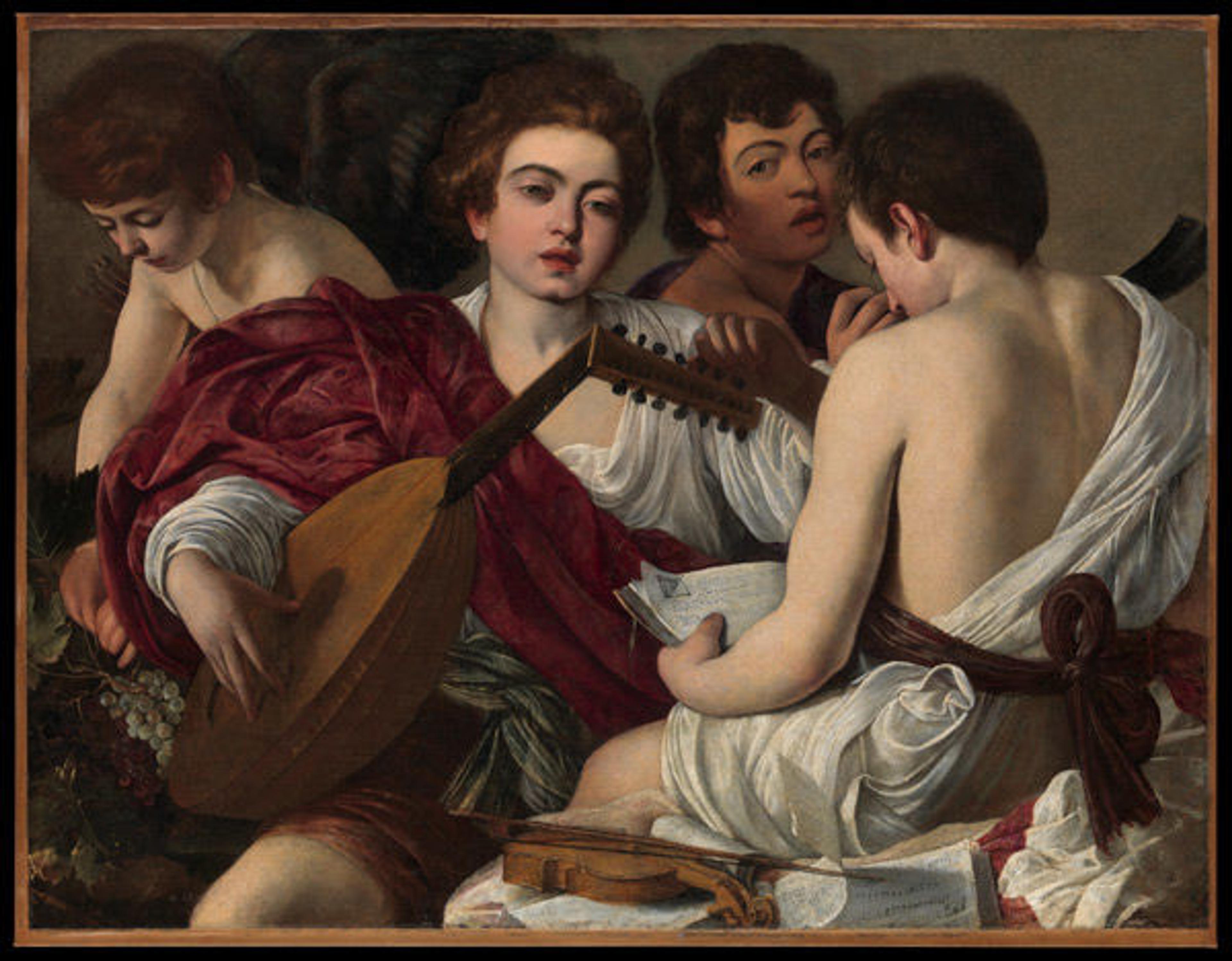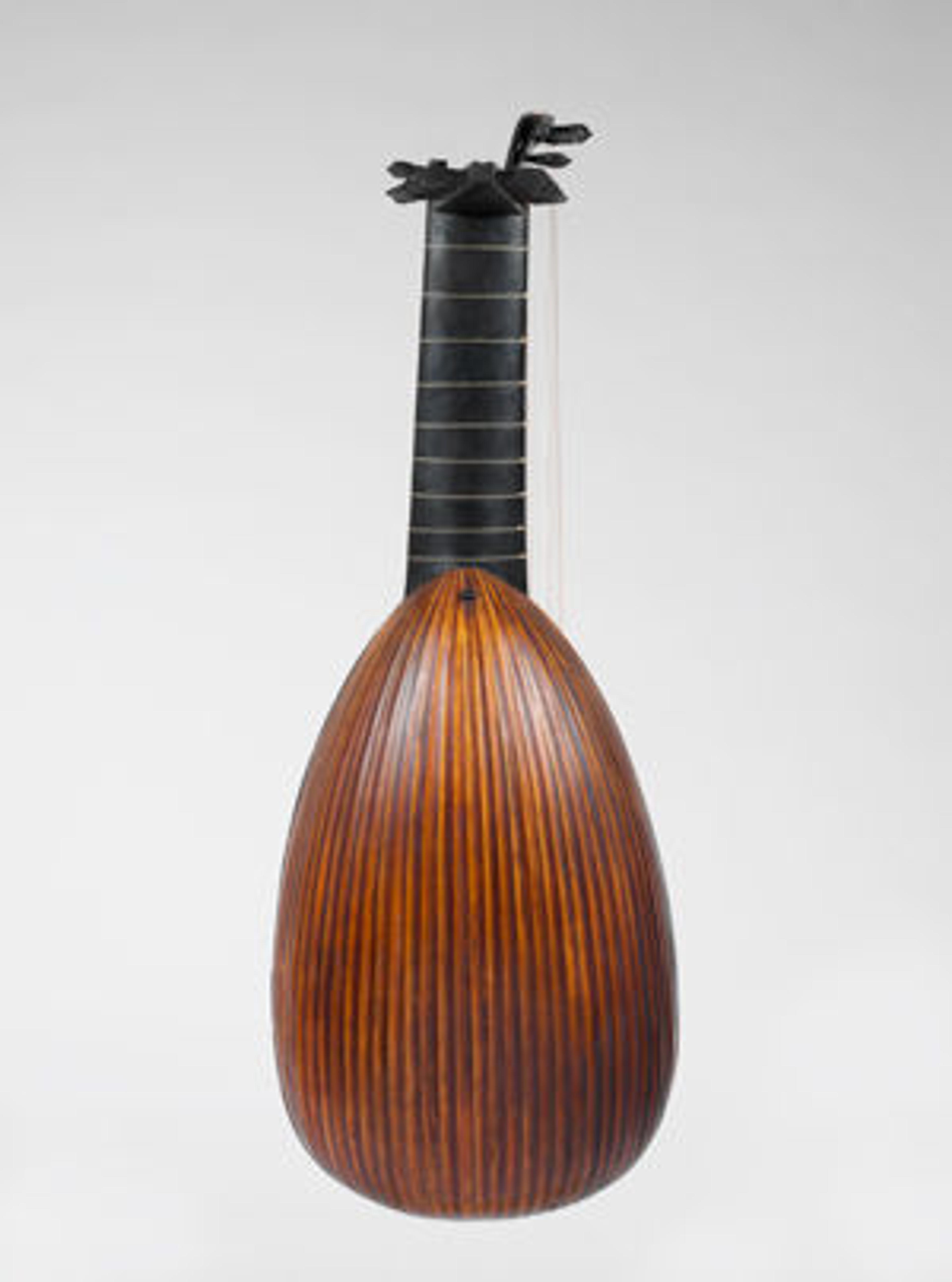Listening to Paintings

Caravaggio (Michelangelo Merisi) (Italian, 1571–1610). The Musicians, ca. 1595. Oil on canvas; 36 1/4 x 46 5/8 in. (92.1 x 118.4 cm). The Metropolitan Museum of Art, New York, Rogers Fund, 1952 (52.81)
«The Metropolitan Museum of Art is full of visual arts depicting people making music. These images of musicians can tell us much about musical life in the past, but what exactly was the experience of contemporary viewers when they saw these works? Certainly, familiarity with the instruments depicted would have evoked music in their minds. A modern example might be the use of a guitar in an ad for blue jeans and its ability to bring to mind a favorite rock anthem or country ballad.»
A new exhibition here at the Met displays three magnificent seventeenth-century paintings that feature musicians alongside musical instruments of the time. Painting Music in the Age of Caravaggio, on view through April 5, showcases The Musicians by Caravaggio, The Lute Player by Valentin de Boulogne, and Allegory of Music by Laurent de La Hyre—each of which presents a figure either playing or tuning a lute. Expanding the scope of the exhibition are instruments from the Museum's collection similar to those depicted in the paintings. As you enter the gallery, you will even hear recordings of works performed on the Museum's lutes.
Left: Attributed to Wendelin Tieffenbrucker (German, active 1570–1610). Lute, late 16th century. Padua, Italy. Yew, spruce, ebony, maple. The Metropolitan Museum of Art, New York, Purchase, Gift of Mr. and Mrs. Robert P. Freedman, by exchange, 1989 (1989.13)

The most prominent instrument in this selection of paintings is the lute. Regarded as the most popular instrument in Europe for hundreds of years, the instrument was originally derived from the ud, a Middle Eastern instrument introduced to European audiences in the eighth or the ninth century. Originally, the lute was played by plucking the strings with a plectrum, but in the fifteenth century, lute players began using their fingers—as seen in the paintings in this gallery—which allowed the players to perform intricate, multipart music. The instrument had four or five courses of gut strings either doubled with two strings per note that were tuned in octaves, or in unison, which provided for a louder, more resonant sound. More strings were later added, and by the sixteenth century the lute was a prominent solo instrument.
The seventeenth century brought great changes in musical styles, with singers and violinists becoming the dominant soloists. The lute became a part of the continuo group, and played alongside instruments that could play basso continuo—the bass line and tonal harmonies that accompanied soloists. Many lutes were adapted for the new musical style, such as the Museum's beautiful lute attributed to Wendelin Tieffenbrucker of Padua, which has an extraordinary back made of thin yew staves. The lute was originally made around 1600 with eight or ten courses of strings, but was converted to thirteen courses with four open bass strings on an extension that was probably added in the eighteenth century.

Laurent de La Hyre (French, 1606–1656). Allegory of Music, 1649. Oil on canvas; 41 5/8 x 56 3/4 in. (105.7 x 144.1 cm). The Metropolitan Museum of Art, New York, Charles B. Curtis Fund, 1950 (50.189)
Around 1585, an extremely long-necked version of the bass lute known as a theorbo, or chitarrone (large kithara), appeared in Florence. An example of a theorbo is seen in the Allegory of Music, where the figure is seen tuning the instrument. The theorbo, with an extended range, was well suited for continuo playing, and many local variants of the instrument were produced. The Museum has an extraordinary example made in 1725 by David Tecchler that is known as a Roman archlute. This installation is a rare opportunity to see the painting and the archlute together, a pairing that greatly enhances our understanding of both works of art.

Left: David Tecchler (Austrian, 1666–1747). Archlute, ca. 1725. Rome, Italy. Spruce, ebony, ivory, tortoiseshell, mother-of-pearl, and various other materials. The Metropolitan Museum of Art, New York, Purchase, Clara Mertens Bequest, in memory of André Mertens, 1988 (1988.87)
Follow Jayson on Twitter: @JayKerrDobney
Related Link
Painting Music in the Age of Caravaggio, on view January 20–April 5, 2015
Jayson Dobney
Jayson Dobney is the Frederick P. Rose Curator in Charge in the Department of Musical Instruments.
Follow Jayson on Twitter: @JayKerrDobney